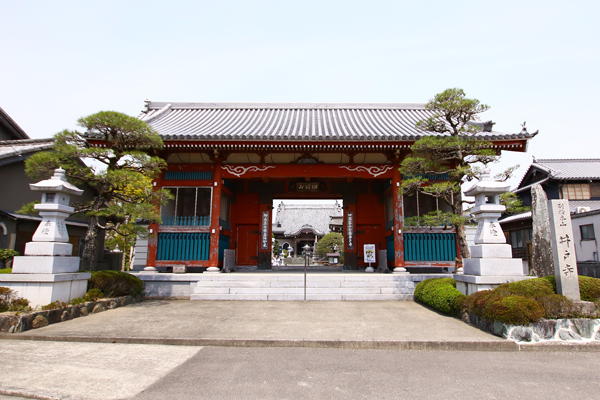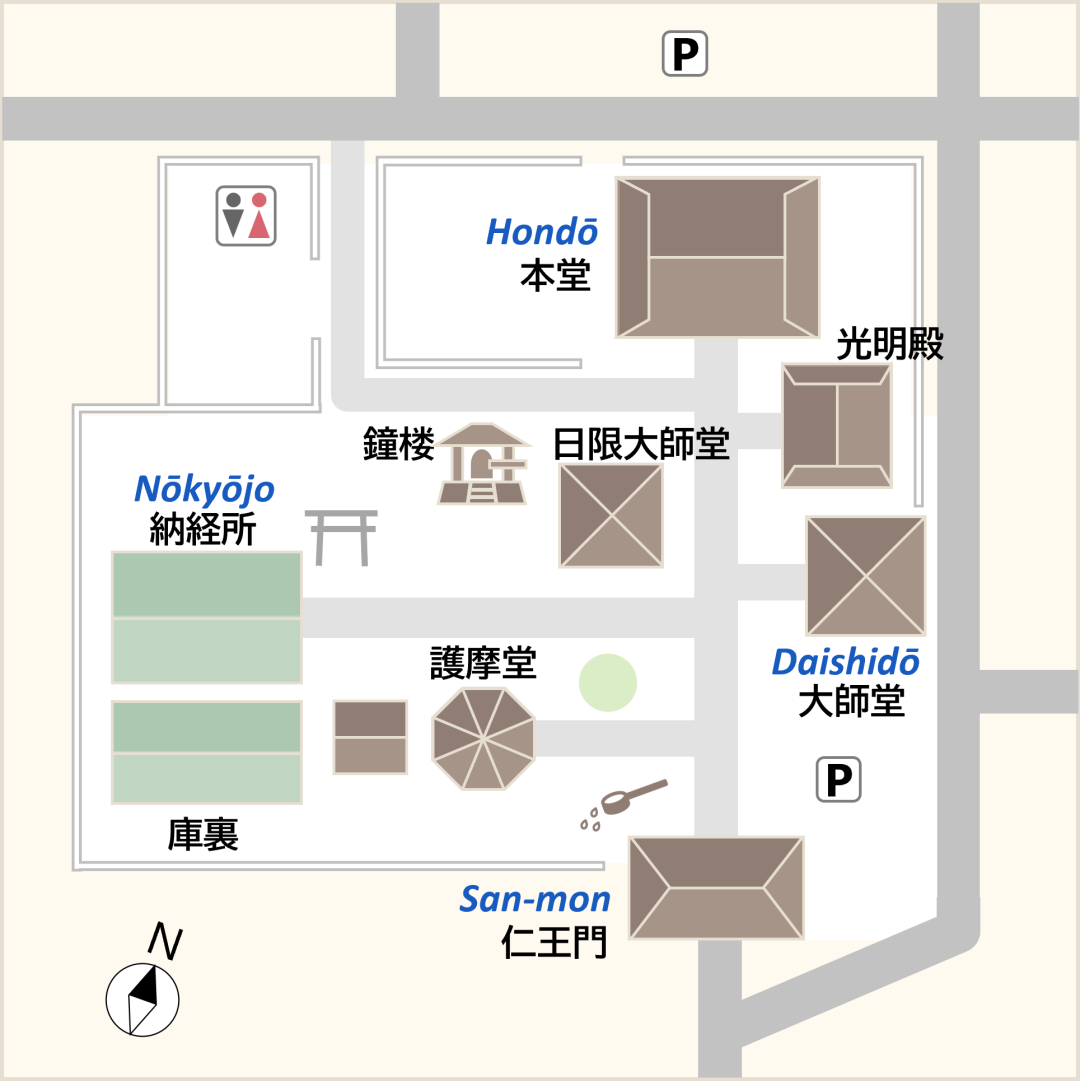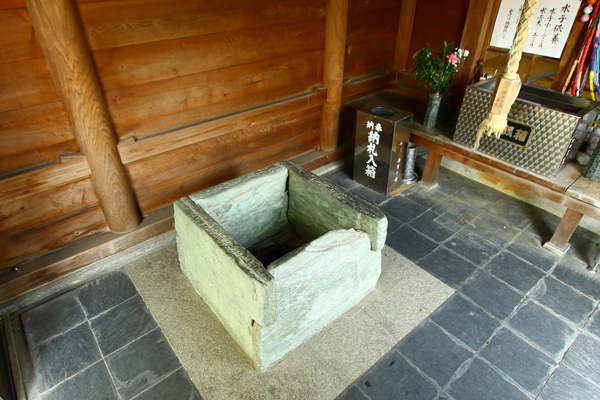The Shikoku Pilgrimage Temple Guide
Temple 17, Idoji

Precinct map

History of the temple
The late seventh century was when a fresh, new Japanese culture was created. A new political system, ritsuryo sei (law based on Chinese systems), was implemented. As part of this reform, a provincial official called the kokushi was appointed in Awa (Tokushima). Next to the office of the kokushi, an imperial temple was built. This was the origin of Idoji, built under the direction of Emperor Temmu (reigned 673-86). At that time, the name of the temple was Myoshoji. It was a magnificent temple with seven major buildings, and was the head temple for 12 subordinate temples.
The principal images are seven seated statues of Yakushi Nyorai (Medicine Buddha) carved by Shotoku Taishi. The side statues of Nikko and Gekko Bosatsu (Sunlight and Moonlight Bodhisattvas) seem to have been carved by Gyoki. When Kobo Daishi visited the temple in 815 to see these statues, he carved and enshrined a 1.9-meter-tall statue of Juichimen Kannon Bosatsu (Eleven-faced Bodhisattva Who Hears the Sounds of the World) on a cypress tree. This statue, holding a Buddhist staff in the right hand and a water vase with a lotus flower in the left, is designated a National Important Cultural Property. Kobo Daishi also took pity on the village, which was suffering from a lack of clean water. He dug a well with his staff in just one day. Pure water gushed forth. He named the area Ido Village (Village of the Well) and renamed the temple Idoji. (Temple of the Well)
After the Nanbokucho period (1337-1392), the temple experienced drastic changes. First in 1362 the temple was destroyed by fire during the war of Hosokawa Yoriyuki, and then in 1582 it was damaged in a battle between Sogo Nagayasu and Chosokabe Motochika. The Hondo was rebuilt in 1661.
The statue of the Seven Buddhas of Yakushi Nyorai (Yakushi Nyorai surrounded by six other Buddhas of Healing) is rare even in Japan. It is believed to have power for good fortune, eliminating seven kinds of suffering and destruction, and bringing the seven kinds of happiness and birth.
Highlights
Omokage no Ido
This is the legendary well dug by Kobo Daishi. If you look into the well and see yourself, you will have good health. If not, you may have a bad luck within three years.
Higiri Taishi
Higiri Taishi is a stone statue of Kobo Daishi, also known as Water Kobo Daishi. It is said to bring good luck if you visit the temple every day for a certain number of days, such as five days or seven days.
Niomon Gate
The gate was donated by Shigeyoshi Hachisuka, the 10th lord of the Awa. It was moved to Idoji from the Otani Villa.

Annual Events
| March 21 of the lunar calendar | Shomieiku (Memorial service for Kobo Daishi) |
| 28th of every month | Fudo Goma (goma fire ritual) |
Details
Names: Rurizan, Shinpukuin, Idoji
Denomination: Shingon sect, Zentsuji school
Principal image: Seven Yakushi Nyorai
Founder: Emperor Temmu
Founded: 673
Access
Address: 80-1, Ido-Kitayashiki, Kokufu-cho, Tokushima City, Tokushima, 779-3118
Phone: 088-642-1324
Parking: 30 cars, 5 microbuses, 5 buses (7:00 a.m.-5:00 p.m.)
Lodging: None
Official website: None
